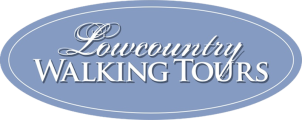My Favorite Charleston Alleys

I decided a while back to create a “Charleston Alleys and Hidden Passages Tour” because there are so many out of the way, narrow, and beautiful passages in Charleston’s Historic District. There is a wealth of history with each alley and, as no two alleys are adjacent, there’s a wealth of sites and stories between each one.
As you plan your trip to Charleston, I encourage you to put these alleys on your list of places to visit, either on your own or with me at Lowcountry Walking Tours! I’ve also created a simple Google Map indicating the location of each of the alleys. You can access the map here.
1. Philadelphia Alley: Once known as Cow’s and Dueler’s Alley, Philadelphia Alley is one of the longest and probably the most beautiful. When I conduct a tour group to this alley, I get many comments of “Wow!” and “Oh my goodness.” This alley is, by most accounts, where one of the most infamous duels in Charleston history took place in 1786. It is located between Queen and Cumberland (where it is marked by a street sign) Streets directly behind St. Philip’s Church. There are those who maintain that it is haunted today by the “Whistling Ghost” of Dr. Joseph Brown Ladd, who was likely mortally wounded in a duel there in 1786. Local favorite son, Darius Rucker, shot a large part of his video to “The Comeback Song” here.
2. Stoll’s Alley: Described in 1894 by the New York Times as a “dirty, narrow, little lane in the lower part of the city,” most visitors pass this alley on its eastern end without noticing it. That’s because it’s only about 6 feet wide at that end. It too is marked with a street sign at either end and I assure you is no longer a “dirty, narrow little lane in the lower part of the city.” Originally called “Pilot’s Alley,” its name changed when blacksmith, Justinius Stoll built his “modest” home there in the 1740s. There are four Philip Simmons gates in Stoll’s Alley.
3. St. Michael’s Alley: Full of beauty and history, St. Michael’s Alley connects Church and Meeting Streets. Easily accessible just south of Broad St., St. Michael’s Alley is the location of one of the most beautiful Philip Simmons’ gates (the Cross and Egret Gate), the former law office of James Petigru (designed by renowned Charleston architect, Edward Brickell White), the house built by Clelia Peronneau Matthews McGowan (the first woman to hold public office in South Carolina and Charleston’s first female alderman),and a 1913 house built by DuBose Heyward, author of “Porgy” which later evolved into the great American opera, “Porgy and Bess.” This alley is also the site of some of Charleston’s earliest preservation efforts.
4. Elliott Street, or Elliott’s Alley: Possibly the oldest alley in town, this narrow lane connects East Bay and Church Streets immediately south of Broad. Initially a bustling retail district providing an outlet for the wholesale businesses we now call Rainbow Row, this area fell victim to 2 major fires in the 1700s, but has been restored since 1778 and is the site of some beautiful old tenement houses, as well as the most beautiful parking lot in Charleston (!) surrounded by a wall containing a notch to accommodate an ancient Live Oak tree.
5. Longitude Lane: This one is a real jewel! Thought to be one of the original streets within the Old Walled City (late 1600s), despite its name Longitude Lane runs east-west! There is much speculation as to why, but I think it’s just an eccentric Charleston thing. Walking along this alley, one gets a true feel for the old streets of Charleston as they were back in the 17th century.
I hope you find this information interesting! Of course, if you have any questions about the Alleys I’ve mentioned here, or anything else concerning Charleston, please do not hesitate to ask! I’m always pleased to help.
